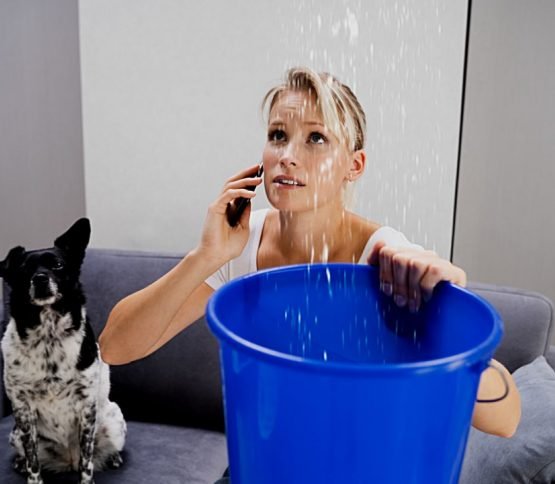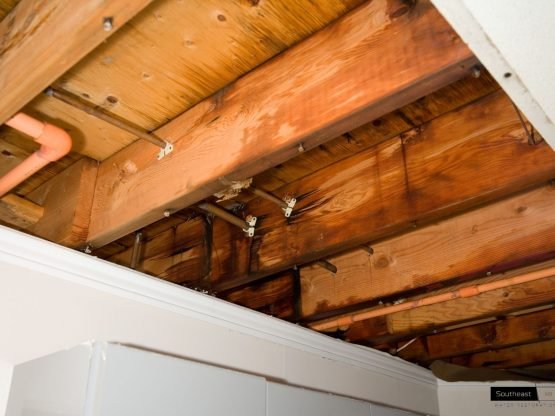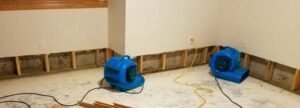- 24/7 Water Damage Restoration & Mold Remediation
Water mitigation process ensures that your house won’t have any further water damage. Contact us today at (404) 631-7022.
Water Restoration provides quick water mitigation to stop further damage to your property.
Further water damage needs to be addressed and mitigated before you can rehabilitate a property that has been flooded. This is where water mitigation services come into play.
Water extraction — both when it comes to standing water and any remaining water that may be soaking carpeting or other porous building materials — is typically the most important act undertaken before restoration can begin.
In this article, we’ll explain the mitigation method (together with the tools and equipment that are commonly utilized) and address some of the most often asked questions about the practice.


After a flood, water mitigation entails assessing, containing, and preventing future damage. That is the primary responsibility of every organization or individual involved in water mitigation.
Water mitigation also entails collecting water from the land in order to return it to its pre-loss state. While mitigation and restoration are distinct tasks on a property, mitigation is required for restoration.
Furthermore, water mitigation is frequently followed by water restoration. Unless the property was in need of demolition due to substantial structural deterioration.
1.) Stop the Water Flow
Water infiltration is frequently caused by Mother Nature, and by the time a contractor arrives on site, it will have stopped. In other cases, the mitigation business may be required to turn off a faucet, appliance, or the property’s main water valve, as well as perform emergency roof repairs such as tarping or shrink-wrapping roofing material. Identifying the source of the water loss and ensuring that no more water enters the property is an important component of preventing future damage and a remediation company’s responsibility. In other circumstances, the property owner may be unsure or fearful of attempting to stop the water flow on their own.
2.) Determine Mitigation Needs
The primary group serving the cleaning and restoration business, the Institute of Inspection, Cleaning, and Restoration Certification (IICRC), divides flood water into three categories: 1, 2, and 3. Category 1 water is commonly referred to as “clean water,” and is similar to tap water, however it could have come from a damaged water line or an overflowing tub. Grey water, also known as Category 2 water, is likely to contain chemical pollutants and/or debris. Category 3 water is highly contaminated “black water,” which might include raw sewage, seawater, river water, and other contaminants.
Determining the quality of the water and if it poses a concern to property occupants is part of a mitigation company’s overall assessment. The cleanliness of the water will also decide how intensive restoration operations must be in order to effectively restore the property to its pre-loss condition, as well as how much personal protective equipment (PPE) must be worn while working on the property.
3.) Extract and dry thoroughly
Finally, the mitigation business will likely remove any standing water from the property and may use portable extractors to remove any remaining water. After the water has been extracted, the following stage in water damage restoration is to dry off the affected areas.

The main difference between water mitigation and water damage restoration, as previously stated, is the process. As previously stated, water mitigation essentially prevents any more damage. In other words, it’s what experienced restoration contractors do before they start rebuilding a home to try to limit the amount of damage.
This may entail preserving the property’s structural integrity, removing salvageable things from the property, and tarping off or containing other portions of the property where water damage could spread.
Finally, water must be removed from the premises to effectively prevent the potential of additional spread and property damage.
Water damage restoration begins after mitigation is completed. This is the process of returning the structure to its pre-loss state. The quantity of restoration work required will be largely determined by the severity of the property damage. Installing air movers and dehumidifiers on the property may be enough to adequately dry it out in some circumstances. In other circumstances, drywall will need to be removed, carpeting and padding will need to be removed, and antimicrobials will need to be used to prevent mold growth. It frequently includes content restoration to restore a property’s hard and soft commodities to their pre-loss condition.
If building components (such as carpet, flooring, drywall, and wiring) must be removed, reconstruction may be necessary before the property can be restored to its pre-loss state. As you can see, skilled restoration contractors need to know what needs to be done first before they can restore a water-damaged property. This will not be known until the problem has been contained and the damage has stopped spreading throughout the property.

Simply defined, it works to analyze, contain, and avoid additional property damage when a loss has happened. When a mitigation business comes on the scene, it will examine the water’s quality, contain the existing water to prevent it from spreading to other sections of the property, and extract the water using expert extraction equipment. After the water has been extracted, the water mitigation crew may leave the property and be replaced by a water damage restoration company. In most circumstances, however, the water mitigation firm also performs water damage restoration.
© 2024 Best Water Damage Restoration